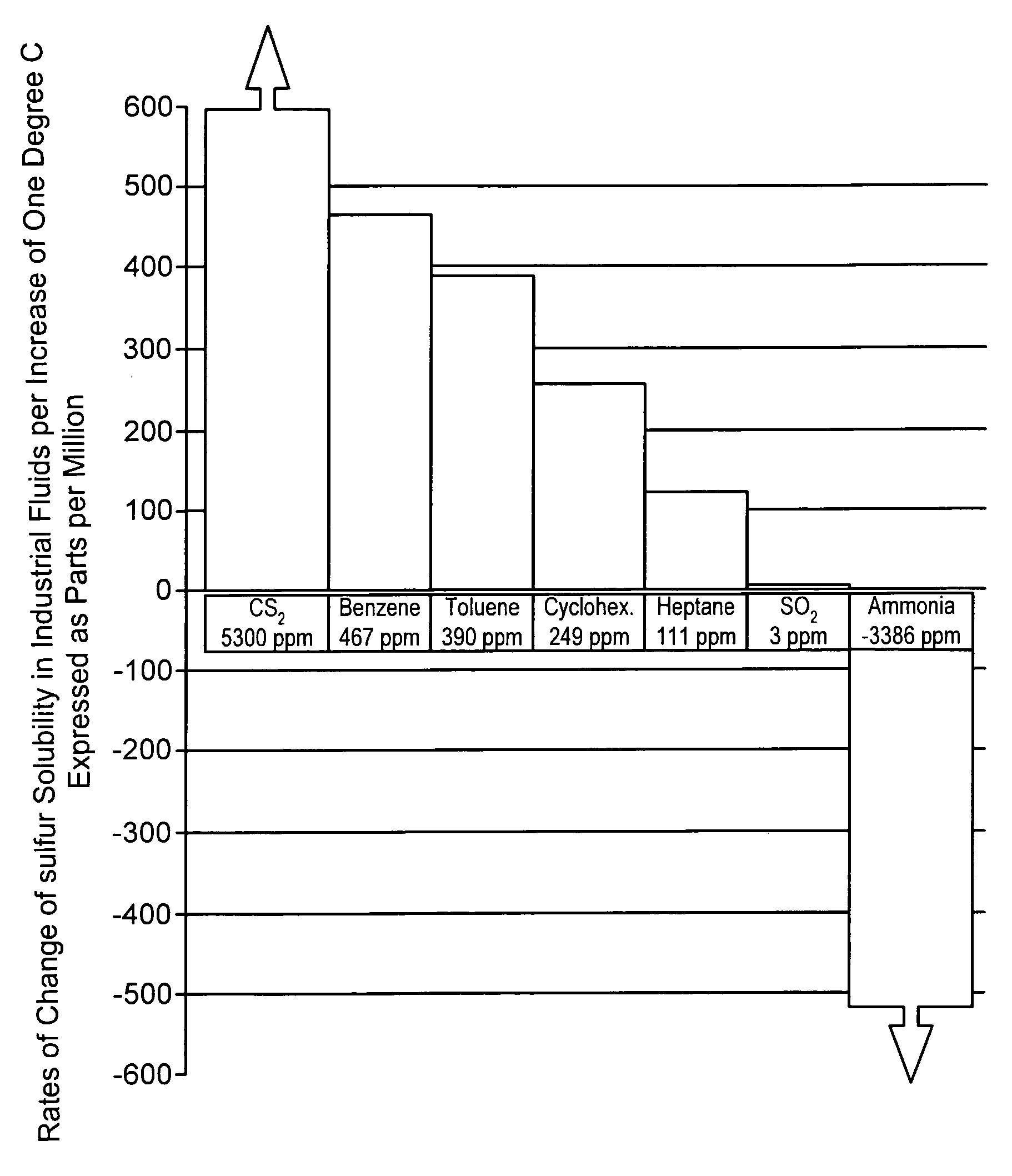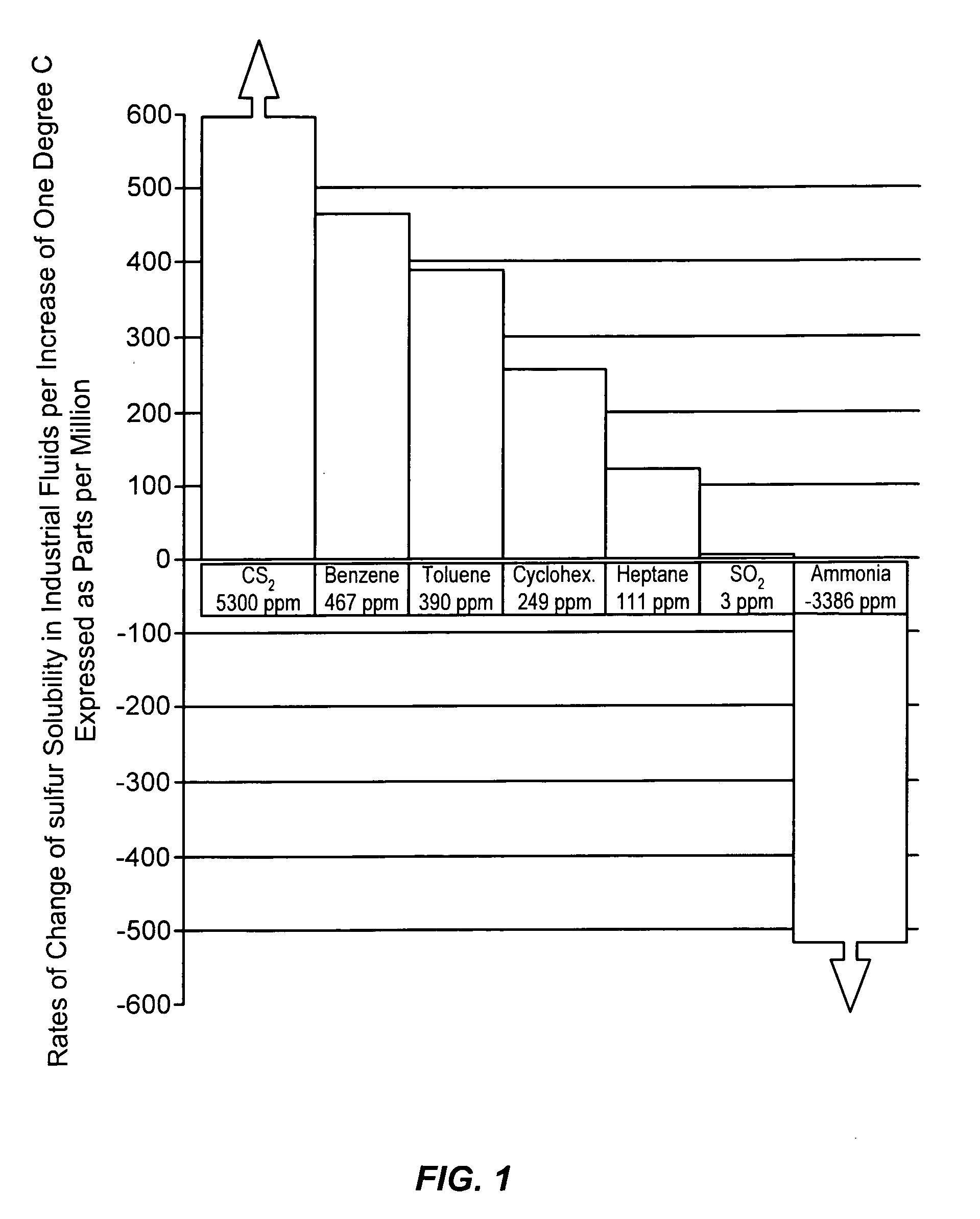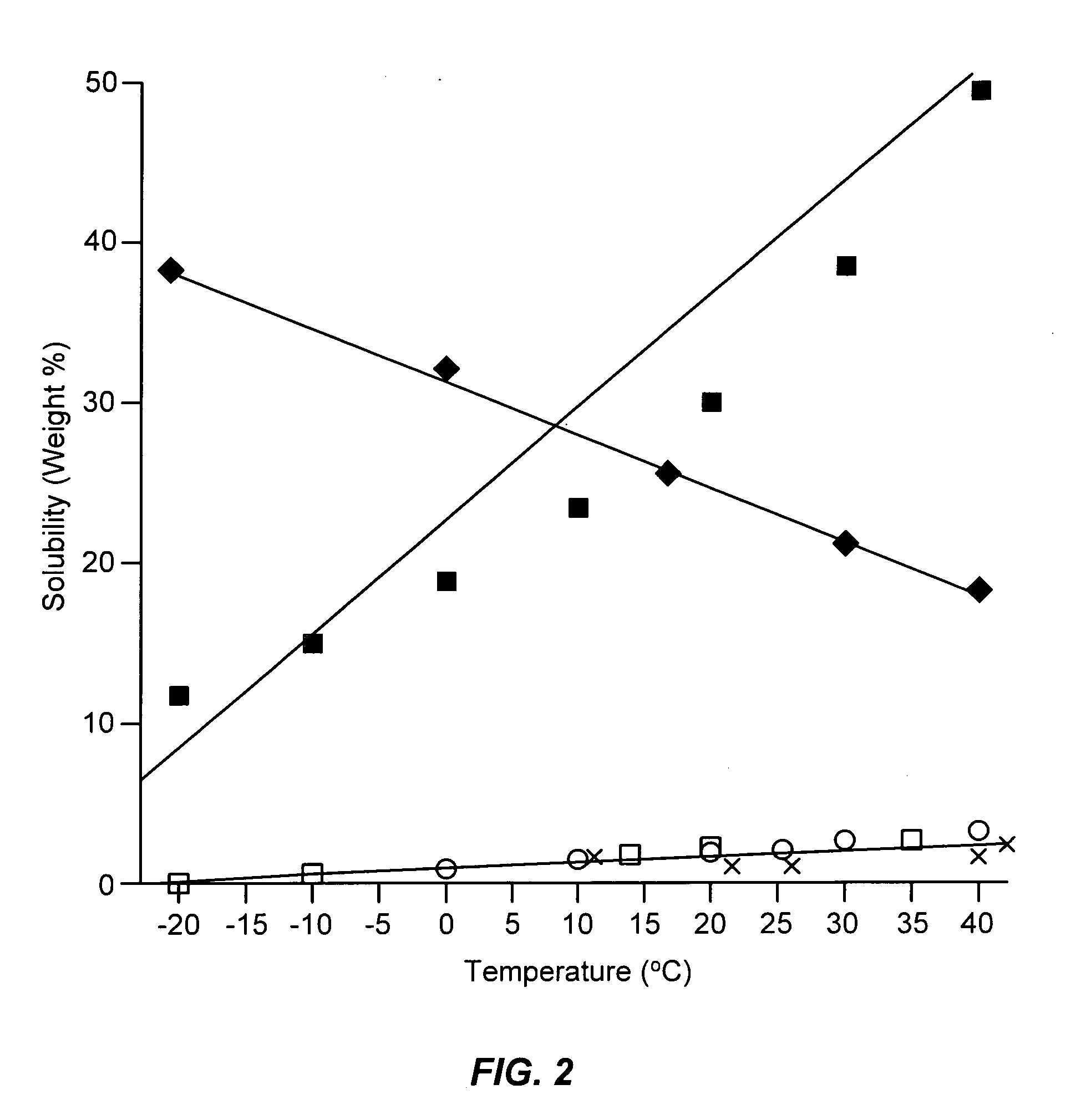Free-flowing sulfur transport, storage and use to produce energy, fertilizer or hydrogen without carbon dioxide
a free-flowing, sulfur-containing technology, applied in the direction of conveyors, sulfur preparation/purification, sustainable manufacturing/processing, etc., can solve the problems of high maintenance, excessive power consumption, sulfur precipitation from solution, etc., to reduce the tendency to corrode ferrous metal, and low solubility. the effect of the rate of chang
- Summary
- Abstract
- Description
- Claims
- Application Information
AI Technical Summary
Benefits of technology
Problems solved by technology
Method used
Image
Examples
example 1
[0068]This example illustrates the solubility and fluidity characteristics of mixtures of sulfur and anhydrous ammonia at different temperatures.
[0069]Representative models of transport vessels were fabricated from clear 19 mm polyvinyl chloride Schedule 40 or Schedule 80 pipe in appropriate lengths to provide a capacity of approximately 100 mL per pipe section. Each section was capped at one end by solvent welding and adhesive techniques and a ball valve was placed on the other end. Each vessel was weighed to establish its tare and then charged with liquid anhydrous ammonia. The mass of ammonia thus added was then determined and a predetermined amount of sulfur was placed in a separate vessel of the same construction. The ammonia and sulfur vessels were then joined through their ball valves, and the valves were opened to combine the liquid ammonia and sulfur which were then mixed by rotation, inversion, and agitation of each vessel.
[0070]By observation it was determined that mixtur...
example 2
[0071]This example illustrates the pumping of solutions and slurries of sulfur in liquid anhydrous ammonia in a bench-scale model.
[0072]A bench-scale piping circuit was made from 19 mm diameter steel and transparent PVC pipe having a total circuit length of approximately 4 meters. The circuit contained a small pump and a ninety-degree downward angled steel U-joint of about 0.9 meter with a drain valve. The U-joint was placed at mid-circuit from the pump and was attached with appropriate isolation valves and detachable close couplings below the isolation valves. Three separate standing pipe sections were attached as Tees extending vertically upwards from the main circuit. These standpipes were placed at regular intervals between the pump and the downward U joint on one side of the circuit. The standpipes were 15 cm to 25 cm in height. The standpipe closest to the pump was fitted with a valve attachment leading to a vacuum pump. The second standpipe was fitted with a commercial ammoni...
example 3
[0082]This example presents a prospective illustration of a slurry pumping method, a solid sulfur storage method, a solid sulfur recovery method, and further screening experiments for shale oil, crude oils, coal, grain, and tar sands.
[0083]The dropping funnel method of transferring slurry to the pipe system described in Example 2 can be replaced with a valve-in-head cartridge filter container without the interior filter cartridge, placed in-line with a by-pass circuit. Sulfur can be loaded separately in the filter container and ammonia charged separately. At an appropriate time the ammonia is washed into the sulfur and thence into the circuit either as a slurry or as a simple solution. An in-line baffled static mixer and a paddle wheel flow indicator can also be used. The tendency of the system to form deposits can be determined by a steel tube dipped into an agitated slurry vessel while running a cold or hot heat transfer fluid through the tube.
[0084]To investigate applications of ...
PUM
 Login to View More
Login to View More Abstract
Description
Claims
Application Information
 Login to View More
Login to View More - R&D
- Intellectual Property
- Life Sciences
- Materials
- Tech Scout
- Unparalleled Data Quality
- Higher Quality Content
- 60% Fewer Hallucinations
Browse by: Latest US Patents, China's latest patents, Technical Efficacy Thesaurus, Application Domain, Technology Topic, Popular Technical Reports.
© 2025 PatSnap. All rights reserved.Legal|Privacy policy|Modern Slavery Act Transparency Statement|Sitemap|About US| Contact US: help@patsnap.com



